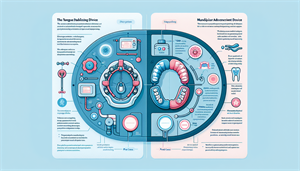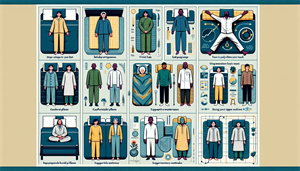
Device Recommendation for Sleep Apnea & Snoring
Obstructive sleep apnea (OSA) is a condition that affects millions of people worldwide, causing disrupted sleep, daytime sleepiness, and other health issues.
With its increasing prevalence, it’s crucial to find an effective treatment that suits each individual’s needs. Tongue-stabilizing devices (TSDs) and mandibular advancement devices (MADs) are two options that have gained attention in recent years. But which one is the better solution for OSA?
Let’s put them head-to-head in a “TSD vs MAD” comparison and find out.
Key Takeaways
-
TSD and MAD therapies are both effective treatment options for Obstructive Sleep Apnea, with MAD therapy having better results in terms of reducing daytime sleepiness and improving quality of life.
-
Patient acceptance and adherence should be considered when selecting a treatment option due to potential side effects such as discomfort, excessive salivation, dry mouth or pain/discomfort in teeth.
-
Alternative treatments include CPAP therapy, positional therapy & lifestyle modifications. Consulting a doctor is recommended for best results.
Understanding TSD and MAD
TSDs and MADs are innovative devices designed to alleviate snoring and sleep apnea by enlarging the airway, thus improving sleep quality and reducing daytime sleepiness. In a randomized controlled trial conducted at a tertiary hospital sleep clinic, as a part of clinical research in respiratory medicine, a comparative analysis was conducted between the two treatment arms: TSD and MAD, utilizing home sleep apnea testing and patient-reported outcomes to evaluate their effectiveness.
Tongue-Stabilizing Devices (TSDs)
The novel tongue stabilizing device, or tongue-retaining device, is a non-invasive treatment option for OSA. The mechanism of action for TSDs involves a small compartment that suctions the tongue in place, preventing it from falling back into the throat and obstructing the airway.
The TSD used in the clinical trial was Aveo-TSD, which underwent a titration protocol to adjust the degree of tongue protrusion and ensure the best possible treatment outcome. The trial revealed that TSD therapy had a positive response to the respiratory event index, oxygen desaturation index, and fatigue measures. However, the acceptance rate of TSD therapy was low, with only 50% of patients being able to tolerate the treatment.
Mandibular Advancement Devices (MADs)
Mandibular advancement devices, also known as mandibular advancement device mad, are another type of oral appliance used to treat OSA. They work by physically shifting the jaw forward, increasing the size of the airway and enabling better airflow. One such device is the mandibular advancement splint. MADs often require a prescription and are custom-made to fit the patient’s mouth.
Oral appliance therapy, specifically using mandibular advancement devices, has proven to be an effective treatment option for many patients. MAD therapy has been shown to result in significant improvements in daytime sleepiness and quality of life measures.
The MAD therapy lasted averaged 88 days after insertion. There was a variance of 54 days. However, potential drawbacks include potential jaw pain and stiffness, drooling, and other adverse effects.
Efficacy of TSD vs MAD
When comparing the effectiveness of TSD and MAD therapies in treating OSA, the results of the clinical trial showed that both treatments had a comparable efficacy in terms of respiratory event index and fatigue reduction.
However, MAD therapy achieved better results in terms of reducing daytime sleepiness and improving quality of life.


